Distinct clinical outcomes and biological features of specific KRAS mutants in human pancreatic cancer
- PMID: 39214094
- PMCID: PMC11419252
- DOI: 10.1016/j.ccell.2024.08.002
Distinct clinical outcomes and biological features of specific KRAS mutants in human pancreatic cancer
Abstract
KRAS mutations in pancreatic ductal adenocarcinoma (PDAC) are suggested to vary in oncogenicity but the implications for human patients have not been explored in depth. We examined 1,360 consecutive PDAC patients undergoing surgical resection and find that KRASG12R mutations are enriched in early-stage (stage I) disease, owing not to smaller tumor size but increased node-negativity. KRASG12R tumors are associated with decreased distant recurrence and improved survival as compared to KRASG12D. To understand the biological underpinnings, we performed spatial profiling of 20 patients and bulk RNA-sequencing of 100 tumors, finding enhanced oncogenic signaling and epithelial-mesenchymal transition (EMT) in KRASG12D and increased nuclear factor κB (NF-κB) signaling in KRASG12R tumors. Orthogonal studies of mouse KrasG12R PDAC organoids show decreased migration and improved survival in orthotopic models. KRAS alterations in PDAC are thus associated with distinct presentation, clinical outcomes, and biological behavior, highlighting the prognostic value of mutational analysis and the importance of articulating mutation-specific PDAC biology.
Keywords: KRAS; clinical outcomes; genomics; organoids; pancreatic cancer; spatial transcriptomics.
Copyright © 2024 Elsevier Inc. All rights reserved.
Conflict of interest statement
Declaration of interests E.M.O., research funding: Genentech/Roche, BioNTech, AstraZeneca, Arcus, Elicio, Parker Institute, NIH/NCI, Pertzye; consulting/DSMB: Boehringer Ingelheim, BioNTech, Ipsen, Merck, Novartis, AstraZeneca, BioSapien, Astellas, Thetis, Autem, Novocure, Neogene, BMS, Tempus, Fibrogen, Merus, Agios (spouse), Genentech-Roche (spouse), Eisai (spouse). G.M.C.:A full listing of G.M.C.’s interests can be found at http://arep.med.harvard.edu/gmc/tech/html. C.E.M., founder: Onegevity, Twin Orbit, and Cosmica Biosciences; consulting: Nanostring. L.E.D., research funding/consulting: Revolution Medicines; scientific advisory board: Mirimus. R.C., research funding: Sanofi; consulting/DSMB: Boston Scientific.
Figures
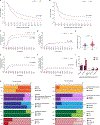

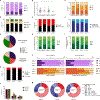
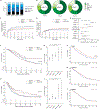

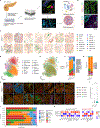
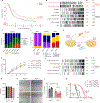
References
-
- Song M, Yoon SB, Lee IS, Hong TH, Choi HJ, Choi MH, Lee MA, Jung ES, & Choi MG (2018). Evaluation of the prognostic value of the new AJCC 8th edition staging system for patients with pancreatic adenocarcinoma; a need to subclassify stage III?. European journal of cancer (Oxford, England : 1990), 104, 62–69. 10.1016/j.ejca.2018.08.027 - DOI - PubMed
-
- Allen PJ, Kuk D, Castillo CF, Basturk O, Wolfgang CL, Cameron JL, Lillemoe KD, Ferrone CR, Morales-Oyarvide V, He J, et al. (2017). Multi-institutional Validation Study of the American Joint Commission on Cancer (8th Edition) Changes for T and N Staging in Patients With Pancreatic Adenocarcinoma. Annals of surgery, 265(1), 185–191. 10.1097/SLA.0000000000001763 - DOI - PMC - PubMed
MeSH terms
Substances
Grants and funding
LinkOut - more resources
Full Text Sources
Medical
Miscellaneous

